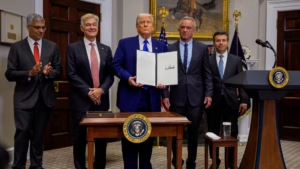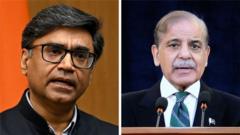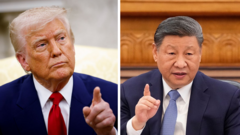The truce between the US and China to lower tariffs represents a critical de-escalation of their trade war, promising potential benefits for both economies. As negotiations continue, perspectives on the agreement highlight contrasting views of victory from both sides.
Understanding the Recent US-China Tariff Agreement: Implications and Perspectives

Understanding the Recent US-China Tariff Agreement: Implications and Perspectives
The recent US-China tariff deal marks a significant step in easing tensions between the two nations, but interpretations of its impact vary across political and economic landscapes.
The United States and China have reached a significant agreement aimed at reducing tariffs on traded goods, effectively signaling a major step back from their escalating trade war. This agreement comes in the wake of heightened tensions that had repercussions globally, impacting economies well beyond the borders of these two powerhouse nations.
What does the agreement entail? Both countries have committed to lowering the tariffs that were previously imposed on each other, marking a return towards more amicable trade relations. Specifically, the US will decrease additional tariffs on Chinese imports from 145% to 30%, alongside China cutting its tariffs on US goods from 125% to 10%. Other measures such as Chinese restrictions on the export of critical minerals to the US have also been revoked. However, the US still retains a 20% tariff aimed at urging China to take significant actions concerning the illegal trade of fentanyl.
In the aftermath of discussions in Switzerland, a pivotal question arises about the future trajectory of US-China relations post-agreement. Though the initial 90-day period holds promise for stability, experts caution that both economies remain cautious and vigilant, engaging in further talks to ensure continued cooperation. US Treasury Secretary Scott Bessent highlighted that both nations largely prefer to avoid a complete economic decoupling, while China's commerce ministry expressed optimism regarding the groundwork laid for resolving differences.
Trade between the two nations encompasses a wide array of goods, with the US exporting mainly soybeans, pharmaceuticals, and petroleum while importing significant quantities of electronics and smartphones from China. The trade dynamics have historically favored China, prompting tariffs as a political maneuver by the Trump administration to encourage American consumerism and job growth in US manufacturing.
As for who wins—both stakeholders have taken celebratory stances. In Beijing, analysts perceive this agreement as a strategic advantage for China, as noted by Janka Oertel, director at the European Council on Foreign Relations. Conversely, US officials frame it as a testament to President Trump's assertive negotiation skills, despite the persistent 30% tariff on Chinese goods.
Economically, analysts from Deutsche Bank have suggested that the changes reflect a boundary set for future tariff rates, establishing a framework for both China and the US. While the UK enjoys comparatively lower tariffs, the current terms signal a long-term balancing act, with both sides anticipating what might unfold in this ongoing trade landscape.
In summary, the recent US-China tariff deal represents a notable pivot towards reducing longstanding trade tensions. While the immediate outlook points to a potential resurgence in economic exchanges, the evolving nature of international relations ensures that both nations must navigate complex political waters moving forward.





















